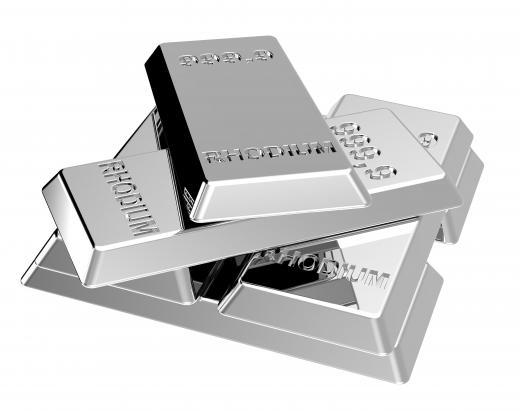Rhodium plating is a metal deposition process used to coat materials with a decorative and protective layer of rhodium. Rhodium is a noble metal that imparts an extremely bright and hard wearing finish when applied as plating. The most commonly encountered examples of rhodium plating are the finishes applied to white gold jewelery to enhance, protect and preserve the luster of the pieces. These finishes are best applied by experienced professionals in properly equipped facilities although do-it-yourself (DIY) rhodium plating solutions are readily available. The plating is generally applied using electroplating techniques, but several non-electrical plating methods may be used as well.
One of the most common, if not contentious, methods of preserving the stark, bright beauty of precious metal alloys such as white gold is rhodium plating. Rhodium is part of the platinum family of metals and, in itself, is one of the rarest precious metals available and is quite costly. When applied as a thin plate, it affords a durable finish of exceptional brightness. Unfortunately, many jewelery manufacturers and retailers fail to disclose the presence of rhodium plating on their white gold products, which has subjected its use to occasional controversy. Nevertheless, rhodium finishes can greatly enhance the appearance and longevity of any metal to which they are applied.

The most frequently used method of applying rhodium finishes is the electroplating process. This involves submerging the recipient material in a heated bath of rhodium-based plating solution and running an electric current through the bath using the recipient as a cathode or negative electrode. This process causes rhodium from the solution to permanently bond to the recipient surface. Rhodium electroplating solutions typically consist of rhodium sulfate, sulfuric acid and water. Although these solutions are available as DIY kits, it is usually preferable to have pieces plated by professionals, as the solutions can be dangerous, and the results are more often than not far better.

There are also non-electrolytic methods of applying rhodium plating that rely on chemical reactions alone to deposit the plated finish. Although simpler, the end results with these methods often tend to be inferior to electroplating processes. From a health perspective, pure rhodium plating is totally inert and harmless. It can, however, cause staining of the skin in some cases. Due to the extremely high cost of rhodium, the plating applied is usually fairly thin. For this reason jewelery that sees frequent use may need to be re-plated at some point in its life span.
